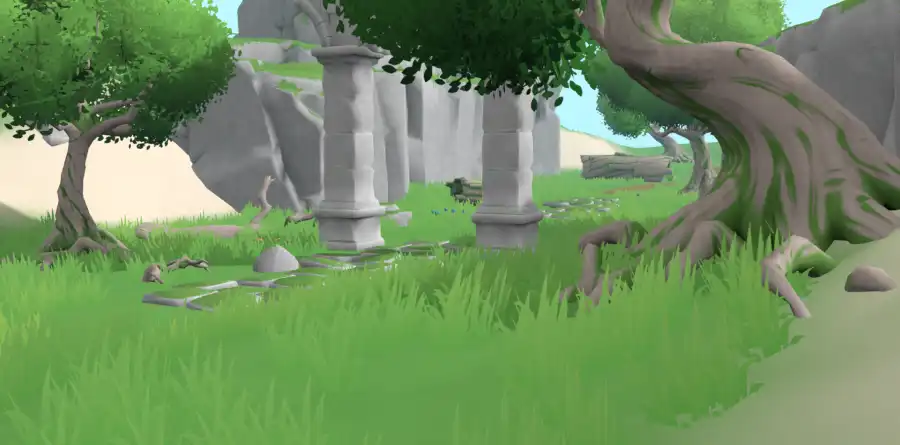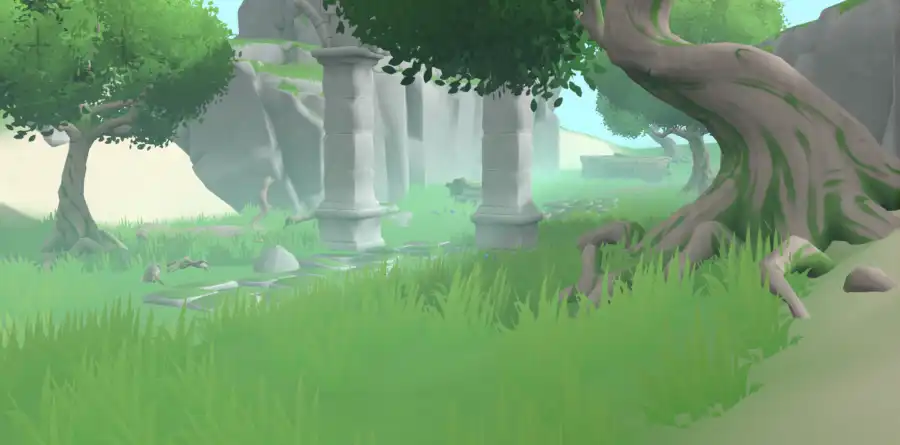Features
Hology Engine features
Hology Engine comes packed with features to make the design process easier and more productive for programmers and artists.
Features
Editor
Cross-platfrom
The editor can be installed on Mac, Windows and Linux. The UI is designed to work well even on smaller laptop screens and it remains performant even on older hardware.
Hot Reloading
Code for actors and shaders used in your scenes is refreshed automatically by the editor within in a split second while the editor is running, enabling you to see the effects of your code changes instantly for faster iteration.
Scenes & Prefabs
Build scenes in the editor as your game levels. Create re-usable parts for your scenes using prefabs that can be edited independenly just like scenes and be nested within other prefabs.
Material Slots
Apply materials in the editor based on material slots derived from the imported 3D model's material colors and/or name to have full control of materials in editor, enabled improved consistency and reusability of materials.
Playtest
Open the game in your browser directly from the editor. As you update the scene, you only need to refresh the browser to see your latest changes. No need to compile and package your game just to test.
Gameplay & Scripting
Actors & Components
Actors are programmable entities in your game that can be futher customized using parameters accessible through the editor. Components are reusable entites that can be attached to actors for common functionality.
Services
The gameplay framework provides a way to create global systems using services with dependency injection. Services are single instances of a class that are appropriate for global functionality such as state management or systems that act on many other entities in the scene.
Physics System
A built in physics system for highly performant collision detection and dynamic physics simulations. React to collision events to drive gameplay. Collision shapes are automatically generated for imported assets and can be further customized.
Input Handling
Input in Hology supports customizable mappings for keyboard, mouse, gamepad, and VR controllers. You can define keybinds and action/axis inputs that can be reused throughout your game logic, enabling separation between user input and gameplay behavior.
Character Movement
A built-in character controller simplifies setting up movement logic for player avatars and AI agents. It supports walking, sprinting and jumping out of the box, making it easy to get started with third- or first-person gameplay.
Animation
Setup animations using an animation state machine, where you define animation states (idle, run, jump, etc.) and transitions between them based on game logic. Crossfading ensure smooth and responsive character animation.
Audio Integration
The engine's audio system allows you to attach sound emitters to actors and control playback dynamically. Support for parameters like pitch, volume, and spatialization makes it easy to create immersive and reactive soundscapes.
Shaders & Materials
Material assets
Create reusable materials as assets and apply them on your 3D models. Use built in shaders or create your own
Typescript Shaders
Use Typescript to create your shaders instead of GLSL but with a familiar syntax to get the benefits of typesafety, editor tooling and the ability to abstract and reuse code more easily.
Painted materials
Use the vertex painting tool in the editor to use different materials in different parts of the same mesh.
Landscape material
For your sculpted landscapes, you can use a landscape material which comes with features such as mixing painted materials with layers, painting holes in the landscapes, and assigning differnt materials depending on the landscape slope.
User Interfaces
React Integration
Utilize existing web development tooling such as React for UI development in your games. The React integration library allows you to access game play services and actors from React components to display game state as well as to position UI elements on screen relative to the 3D position of objects.
Level Design
Landscape Sculpting
Sculpt landscapes in the editor with various easy to use sculpting tools to raise, smooth, flatten, and more. Paint holes in the landscape mesh to create for example caves that cuts away parts of the collision mesh so characters can go through it.
Procedural Foliage
Generate grass, rocks and other foliage on landscape surfaces automatically that that can confom to painted layers. Layers allow you to generate different types of foliage in different places such as walking paths. The slope of the surface can also be used to determine of foliage should be placed.
Volumetric Fog
Place fog volumes in scenes with volumetric scattering of light and shadows.


Visual Effects
VFX assets
Visual effects can be created as their own reusable assets in a dedicated VFX editor to then be placed in scenes for environment effects or spawnd dynamically through gameplay.
Particle customization
Particles can take the form of sprites (billboards), 3D meshes or ribbons (trails) with additional features such as flipbooks.
Particle collisions
Particles in your visual effects can interact with the world with performant collision detection to make them stop or bounce on any surface.
Child particles
Start emitting particles where another parent particle spawns or when it dies such on collisions to create more interesting effects.
Performance
Automatic instancing
For improved performance, objects in the scene with the same material will automatically utilize GPU instancing to reduce draw calls.
Deployment
Web games
Hology Engine is ideal for creating web games for platforms such as Poki, Crazygames, Discord Activities, Itch.io, Facebook Instant Games, and YouTube Playables as it packages with a small bundle size < 10MB.
Mobile games
Deploy games for iOS and Android by packaging your game as a mobile app.
PC games
Reach large audiences by packaging your game for desktop and distribute on platforms such as Steam.